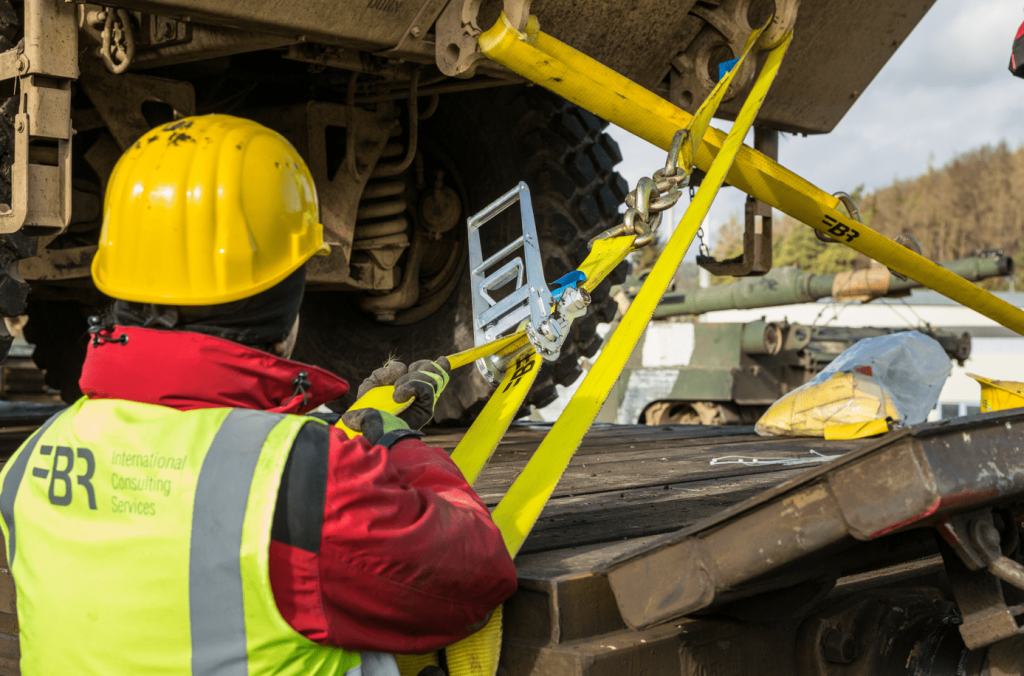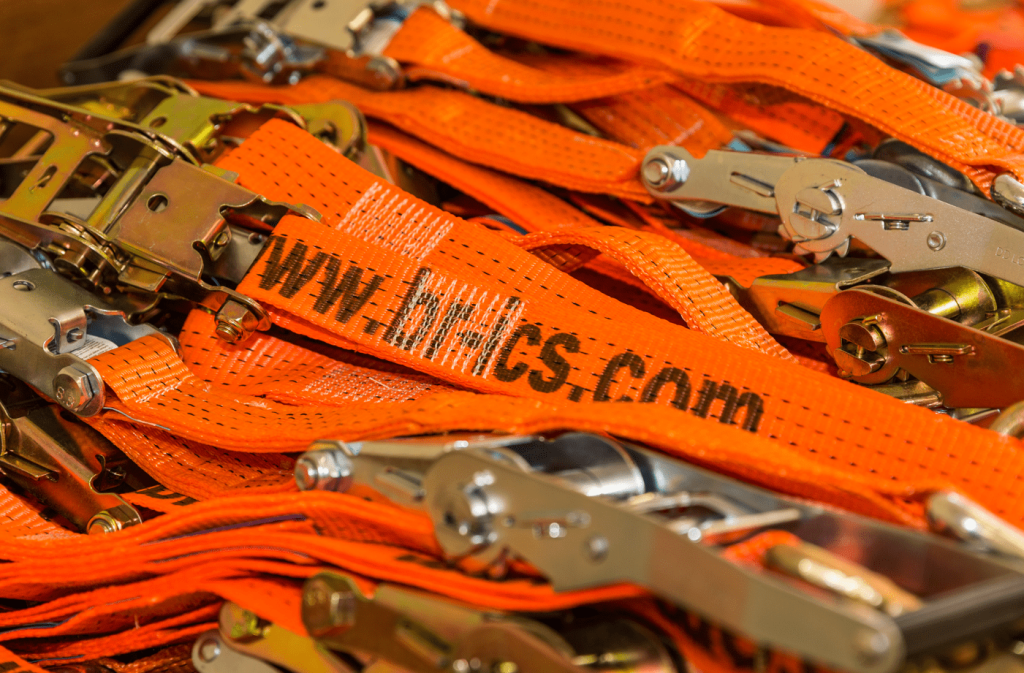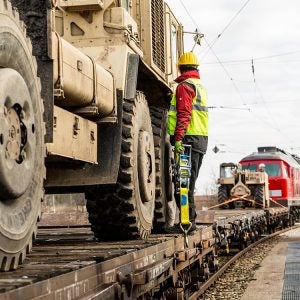The Tactical Advantage of Trains
The mobilization of military assets must be fast, flexible and focused. In Europe, a multi-modal logistics operation must make the best use of road, sea, air and rail capability, with rail still an essential part of an effective solution. We speak to Johann Braun, founder of BR International Consulting Services (BR ICS), about the challenges of loading and securing military equipment for transport by rail.
The effectiveness of the logistics that support military operations can determine the success of their outcome as much as any other factor. Transporting tanks, troops and munitions quickly and, above all, safely, is no easy task. After all, military cargo differs from any other type of cargo in multiple respects. “Military transport has totally different parameters,” says Johann Braun, CEO of BR International Consulting Services (BR ICS). “You need to transport many large vehicles, a large number of troops and often dangerous explosive materials through many countries. You need to understand the weight and the measurements of the cargo, the number and the type of rail cars you need, and the logistics of the destination.”
“Rail is a very important component in a multi-modal transport solution,” he adds. “Everyone has a part to play – road, rail, air and sea – and they must all work together. However, if you have thousands of pieces of equipment then rail is the best solution.”

”Rail remains an important component in military mobility. The most important part is the planning that is done at the start. The more precisely you can plan, the faster and more efficient the loading will be. “
Austrian company BR ICS provides a full range of services to international armed forces in loading and securing military equipment on railway wagons. lt can operate on any rail network in Europe that has a standard rail gauge of 1,435mm.
Braun formed the company in 2015, having spent more than 40 years in the rail industry. His work for the Austrian Federal Railway, including time with Rail Cargo Austria, gave him first-hand of experience in handling large cargos, including military hardware. This gave him the right credentials to lead a NATO working group developing regulations for the loading and securing of military cargo. “The year after I founded the company, I was asked about rail load securing by the US army,” Braun notes. “This was after the Crimea crisis, which is why I was asked to go to Germany. The following years, we were asked to load more than 1,000 trains, which we did without a single problem.”
An exercise in efficiency
Braun’s first experience of military rail transport came in the 1990s during the war in the former Yugoslavia, in which he helped to handle the redeployment of US troops. Fast forward to the movement of troops and equipment because of the Crimea crisis and ongoing training exercises, such as DEFENDER-Europe, and the challenges remain the same. Braun chairs the railroad group in NATO’s Movement and Transportation (M&T) Group, which is a fundamental part of the Logistics Committee, NATO’s senior advisory body on logistics. This role gives him key responsibilities in the planning of training operations in Europe. The M&T Working Group brings together representatives of 24 nations and is one of many NATO’s working groups that are attempting to standardize and improve NATO’s ability to deploy troops and equipment more rapidly and effectively. This is no simple task, given the complexity of the transport network and the demands placed on it, but it is regularly tested with large international exercises, the latest of which was to be DEFENDER-Europe 20.
Scheduled for December 2020, DEFENDER-Europe 20 was to be a US-led multinational exercise involving NATO. Its aim was to build strategic readiness by deploying a combat-credible US force to Europe in support of both NATO and the US National Defense Strategy. Due to the Covid-19 pandemic, the exercise did not take place, but significant planning had been done for what would have been the largest deployment of US-based forces to Europe in more than 25 years, as 20,000 soldiers would have been deployed directly from the US to Europe. Planning for DEFENDER Europe 21 is already under way, though it is in its early stages, and the exercise may be smaller in scale than the one planned for 2020. Nevertheless, the rail component is likely to be significant.
“Rail remains an important component in military mobility,” says Braun. “The most important part is the planning that is done at the start. The more precisely you can plan, the faster and more efficient the loading will be.”
“You need well-trained people with the right skills, as well as the right equipment for securing heavy and sometimes dangerous cargo. If you have that, then rail can be a very safe way of transporting military equipment.”
“In fact, despite Covid-19, BR ICS has seen its orders start to increase since June, when we received our first domestic transport order for Germany. Since then, there has been continued growth in the number of orders, and we are now loading and unloading a similar number of trains compared to December 2019.”

On track for the future
As a partner for military forces operating in Europe, BR ICS offers not only highly specific expertise, but also wide geographic coverage. lt carries out the full range of services for loading and securing military equipment on railway wagons in different countries and loading points across Europe.
These loading points include seaports, train stations and military facilities with sidings.
“If mistakes happen, they are most likely to happen in the loading and securing stages,” he adds. “You need well-trained people with the right skills, as well as the right equipment, for securing heavy and sometimes dangerous cargo. If you have that, then rail can be a very safe way of transporting military equipment.” Before any military equipment is loaded onto railway wagons, the company carries out an in-depth analysis to plan for the type and number of wagons required, and the necessary load-securing materials. On arrival, it handles the removal of all load securing materials to enable the safe and smooth unloading of all equipment.
Furthermore, BR ICS is ready to handle any unforeseen events that might occur during the journey. lt offers services for wagon breakdowns, for example, which include the removal of load-securing equipment and reloading onto a replacement car, all at the location of the breakdown.
BR ICS has the necessary experienced people positioned across Europe, thanks to its extensive network of subcontractors. Their skills not only ensure that cargoes are loaded and secured quickly and safely, but also that the logistics are well planned for all stages of the journey. After all, it is not just the physical handling of equipment that is required for a seamless journey, but also the navigation of political and regulatory issues.
Military cargoes must cross borders and are subject to clearance protocols. The management of the entire rail journey must include administrative, as well as physical, aspects. “Our company gives a guarantee that the cargo will reach its destination without any loading or securing problems,” Braun explains. “If a cargo is stopped at the border or if there is an accident that affects the rail network, then our emergency teams get involved.”
“We have cranes, lorries, equipment and people all over Europe, so we can deal with any problem that may arise.” Over the past 30 years, rail has maintained its pivotal role in European military logistics, enabling forces to move freely and effectively across borders. In the years ahead, its role is unlikely to diminish, so the expertise of BR ICS and its partners will remain just as crucial to NATO and its allies.



